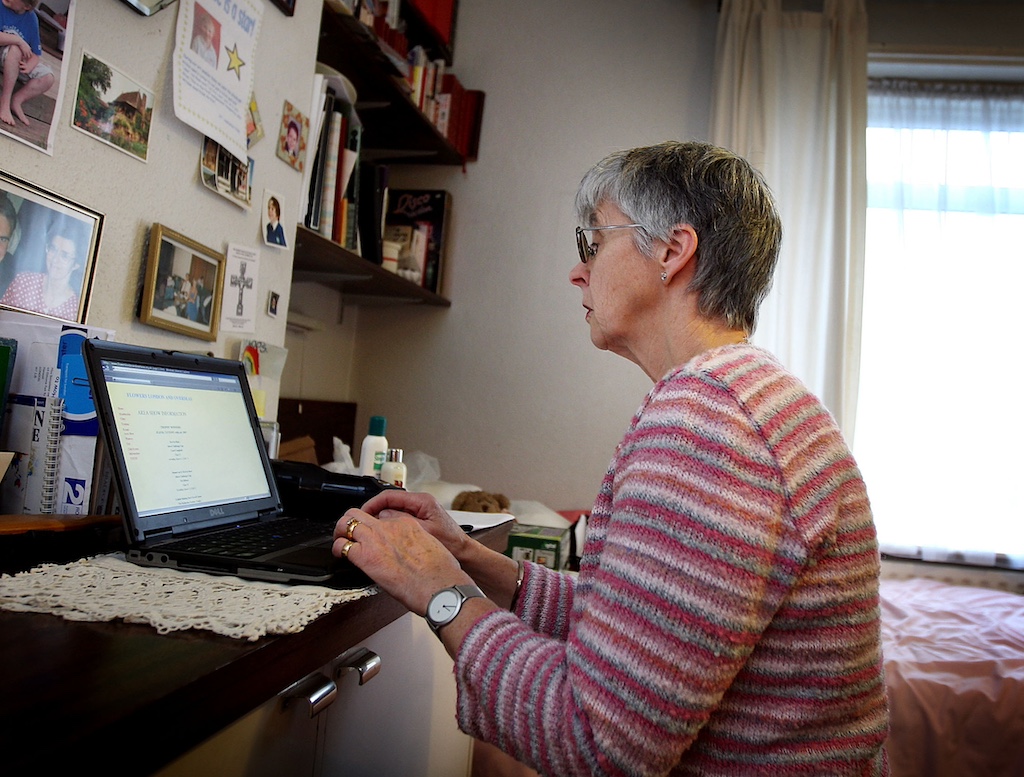The Internet Is Driving Boomers to the Right
While younger people are growing aware of the harmful effects of social media, people over 65 are consuming increasing amounts of far-right content online — and it’s impacting real-world politics.

Reports show that people aged 65 and above have become terminally online. (Peter Macdiarmid / Getty Images)
In the digital world, attention is king, and because clicks feed revenue, our social feeds are now full of AI-generated ragebait and misinformation. But according to a recent report in the Financial Times, we are now past peak social media. Unless you’re over the age of sixty-five.
Infinite scrolling was invented by Aza Raskin, former head of user design at the internet browser Mozilla. It refers to how social media platforms are designed such that content is continuously refreshed.
Psychological research on this compulsive consumption has linked doomscrolling to heightened anxiety and mental distress. Raskin had no illusions about doomscrolling’s effects on our brains: “I know as a designer that by taking away the stopping cue, I can make you do what I want you to do,” he said in an interview in which he also apologized for the harms his invention had caused.
But as social media is increasingly becoming the home of “slop” and “brain rot,” undergoing what the technology writer Cory Doctorow has called “enshittification,” it is also turning away users.
Social media use, according to the journalist and data analyst John Burn-Murdoch, reached its highpoint in 2022. Since then, the total time that adults in developed countries spent on social media has declined by as much as 10 percent. On average, people spend two hours and twenty minutes a day looking at social media.
Surprisingly, younger users are turning away from social media the most. In research published last year, the Pew Research Center discovered a highly critical attitude among teenagers toward social media. Many teenagers are wary of the risks of a life spent online. According to the Pew study, some 45 percent believe that they spend too much time on social media.
However, there is a surprising exception to the general trend. Those aged sixty-five and above have become terminally online.
An article in the Economist reports that patients in clinics that treat screen addiction are increasingly likely to be older. A report for Ofcom, the UK broadcasting standards agency, found that people over sixty-five spend an average of three hours online per day.
Worryingly, the over sixty-five-year-olds are twice as likely to draw their news from the racist and sexist ragebait content common on social media.
In the UK context, research by Politics Home uncovered that members of Reform, a far-right party inspired by Donald Trump’s MAGA movement, are overwhelmingly old, middle-class, and male. They are also more likely to get their news from social media platforms (such as X or Facebook) than voters for other parties.
This radicalization of older men by the new right has been partly fueled by online misinformation. Platforms like Facebook and X are full of unmoderated immigrant-bashing designed to increase people’s fear and paranoia, presenting society as if it were approaching an imminent catastrophe.
Left-wing politics is supposed to combat the kinds of social isolation increasingly affecting the old. But the widening gulf between young and old makes such a project harder to achieve.
Fifteen years into the mass adoption of social media, it’s clear that one of the main effects of these platforms has been to commodify people’s sense of connection to others while keeping them isolated and unable to trust — undermining the ties on which not just socialism but any collective project relies.
Increasingly, we live in societies where multigenerational socializing is rare. What’s more, inflation, rising rents, and increased costs of living make it harder, and more expensive, to maintain our “offline” lives.
Building social and political movements that can improve people’s lives will require including those who have become accustomed to the isolation and false comfort on which digital spaces depend. We will need to reach out to those who are the most enraged and alone.